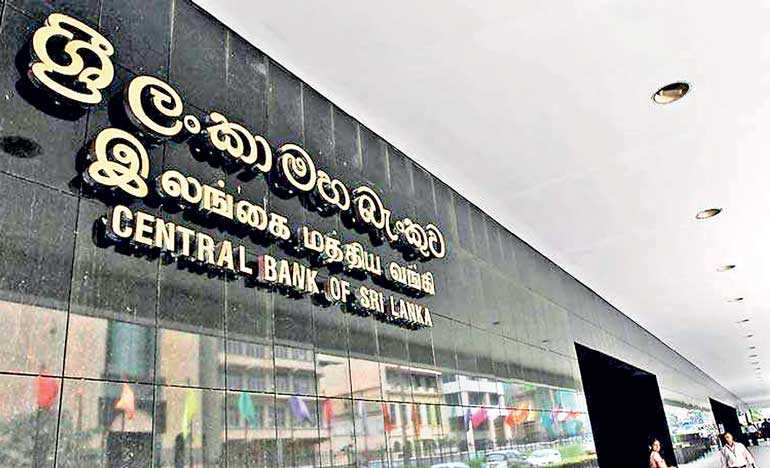Thursday Dec 18, 2025
Thursday Dec 18, 2025
Tuesday, 14 May 2019 00:00 - - {{hitsCtrl.values.hits}}

Recently we were told that the largest ever FDI to Sri Lanka worth $ 3.8 billion would be received for an oil refinery project.
FDIs are frequently highlighted by experts as a key ingredient for growth. However there are many deficiencies in the way the FDIs are perceived.
Real FDIs for 2018 were just $ 238 million?
The Central Bank annual report for 2018 shows the FDIs for 2018 as $ 2,136 million, which is slightly higher than $ 1,910 million in 2017. However this figure could be completely misleading if one analyses its composition.
To start with, out of $ 2,136 million, only $ 238 million are classified as ‘Equity’. Therefore, one could argue that the ‘real’ FDIs are as low as $ 238 million. It is worth analysing how the balance $ 1,898 million is formed. The largest component is the ‘inter-company loans’ which is stated as $ 1,148 million (net of repayments).
The baffling logic of classifying ‘loans’ as FDIs
It is puzzling to note how ‘loans’ could be termed as ‘FDIs’. The whole purpose of mooting for FDIs is the fact that they are ‘equity’ (or shares) in nature, rather than ‘debt’. Debt needs to be repaid inclusive of interest, which adds to the financial commitment. In contrast, equity investments are significantly more desirable as such investments show confidence in the venture in which it is invested. Equity investors rely on profit of the venture, rather than a fixed commitment of a borrower (which is the case for debt).
This is the principle reason why a country, especially one with a high level of debt, should opt for equity investments. On one hand it doesn’t have a burdensome regular commitment (in the form of interest costs), while on the other, it gives the confidence of a business that could be profitable – or self-sustain. Therefore this looks like a significant flaw in the FDI computation. One would be grateful if the Central Bank could give an explanation.
Undistributed profits becoming FDIs
Then the next substantial component of $ 525 million is ‘loans to BOI companies’. Yet again, classifying ‘loans’ under FDIs, clearly defeats the purpose of even identifying FDIs. These should possibly be classified as ‘loans to companies’ rather than FDIs.
Then ‘reinvestment of earnings’ is given as $ 225 million. That is the amount of profit which is not distributed back to the owners (shareholders) as dividends. Therefore one could argue that even that is not really a ‘direct investment’. However, at least that is equity in nature rather than a debt investment, and therefore I would find fewer faults with that classification.
Can a sale of asset be a FDI?
The Central Bank has also clearly identified that $ 828 million of the FDIs in 2018 were for Hambantota International Port Group Ltd. Out of that, as per Central Bank annual report, $ 682 million was received as proceeds of the lease of Hambantota port.
The question arises, if an asset is sold (or leased) could it be classified as a ‘FDI’ or should it be classified as ‘proceeds from sale of assets’? One could very well argue that it should be the latter and not a ‘FDI’. The Central Bank would do well to provide clarity on that as well.
FDI recipient sectors expose grim reality
The Central Bank annual report also states that the FDIs were channelled largely to ports, telecommunications, housing and property development and hotels. The inflow to Ports is most likely the proceeds of the lease of Hambantota port that was mentioned earlier. The telecommunication related FDIs possibly refers to ‘reinvestment of earnings’ mentioned earlier, as it possibly covers mostly the profits not distributed as dividends by telco players such as Dialog, SLT and Mobitel, etc.
Apart from hotels, the other major FDIs are for property developments (or real estate). Real estate is not exactly a value adding economic activity, but rather a supporting sector, which could easily be driven up by speculation which could even result in economically catastrophic real estate bubbles.
Sri Lanka is not in the picture for real global FDIs
The sad truth is, Sri Lanka is not attracting real FDIs for the ideal sectors. We seem to be attracting almost next to nothing on Technological industries where the real fight is taking place in the global economy. The entire US-China trade war revolves around technology. Countries such as Vietnam are benefitting as investments move away from China towards other possible locations. For example, last year, GoerTek, a Chinese based manufacturer of Apple’s Airpods, moved production of wireless headphones to Vietnam, driven by the US-China trade war.
Sadly, Sri Lanka is not even in the picture. Even more sadly, we don’t even hear many Sri Lankan experts highlighting these problems as they engage in theoretical solutions, while completely missing out on the practical measures that should be implemented.
(The writers could be contacted via [email protected].)